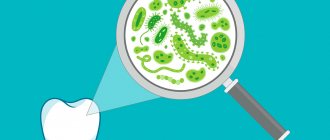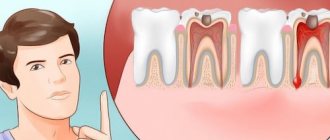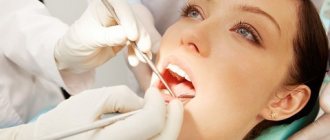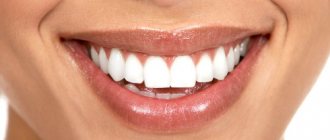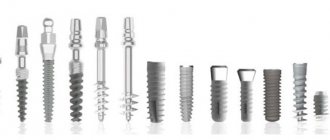To eliminate pain in inflammatory diseases and injuries, Nimesil and Ketanov are often prescribed. These are drugs with anesthetic and anti-inflammatory effects. These medicines have distinctive features.
To eliminate pain in inflammatory diseases and injuries, Nimesil and Ketanov are often prescribed.
Compound similarities
The active substances in the drugs differ, but have similar pharmacological properties. Nimesil contains nimesulide, and Ketanov contains ketorolac tromethamine. These components have the following characteristics:
- Nimesulide has analgesic, antipyretic and anti-inflammatory effects. Belongs to the group of sulfonamides. It is an anti-inflammatory drug of non-steroidal origin. Shows suppressive activity against cyclooxygenase, inhibits the synthesis of prostaglandins.
- Ketorolac tromethamine is characterized by a pronounced analgesic effect. Relieves the inflammatory process and has a moderate antipyretic effect. Suppresses the formation of cyclooxygenase and prostaglandins. The intensity of the analgesic effect is comparable to morphine.
Nimesil is available in powder form for the preparation of a suspension. Ketanov is sold in the form of tablets and solution for injection.
Differences between Nimesil and Ketanov
Medicines differ in the form of release and the active substance. There are other features:
- The analgesic property of Ketanov is predominant over the anti-inflammatory and antipyretic effects. This drug is used to relieve pain of various etiologies. Prescribed after surgery and in the treatment of cancer. Nimesil is used to eliminate acute pain in the lumbar region, back, injuries and sprains, inflammation of the tendons and synovial cavity. Used in the treatment of pathologies of the musculoskeletal system, osteoarthritis. Used to relieve toothache and pain during menstruation.
- The drugs have different rates of onset of therapeutic effect. The maximum concentration of the active substance Ketanov in the blood is observed 40 minutes after administration, and the peak concentration of the active component Nimesil appears after 2 or 3 hours.
- The duration of the therapeutic effect of Ketanov is from 4 to 6 hours, Nimesil remains active longer - from 6 to 12 hours. The indicator in both cases depends on the intensity of the pain syndrome and the characteristics of the body.
Ketanov should not be taken for pain relief for more than 5 days.
The differences include the duration of therapy. Ketanov should not be taken for more than 5 days. The maximum allowable period of treatment with Nimesil is 14 days.
What to drink if your tooth hurts: the best painkillers for toothache
There are two groups of drugs that are best used to relieve toothache. These include: analgesics and NSAIDs (non-steroidal anti-inflammatory drugs).
Analgesics for toothache
These medications eliminate the source of pain by affecting the nerve endings and pain centers in the brain. However, analgesics, unlike NSAIDs, do not affect inflammatory processes and cannot eliminate inflammation of the pulp, periosteum, and gums.
Some drugs from this group, in addition to the analgesic effect, also have an antipyretic effect - they are called analgesics-antipyretics. Such medications can eliminate toothache and reduce the fever that accompanies it. Thus, analgesics-antipyretics help get rid of two unpleasant symptoms at once.
Paracetamol is considered the most popular and safe drug from this group.
Paracetamol
This medication has analgesic and antipyretic properties. It begins to act 30 minutes after administration, after the same time the maximum concentration of the active substance in the body is reached. Paracetamol can be used by children over 6 years of age (in tablet form, dosage 200 mg), adults, pregnant and lactating women.
The effect of the drug lasts 4 hours. This remedy can also be combined with other drugs to enhance their effectiveness. Paracetamol is quite safe, as it has a small list of side effects, and cases of their occurrence are recorded extremely rarely.
Contraindications for use:
- chronic alcoholism;
- serious liver disorders;
- hypersensitivity to paracetamol.
If you have a toothache and this causes your temperature to rise, then the safest thing to do is take a drug whose main active ingredient is paracetamol.
NSAIDs for toothache
Non-steroidal anti-inflammatory drugs suppress the production of prostaglandins (hormone-like substances that cause pain and inflammation in the body), resulting in reduced pain and inflammation. In addition, drugs from this group also have an antipyretic effect.
However, they cause a large list of side effects for the gastrointestinal tract and cardiovascular system. Therefore, they must be taken according to the instructions and prescription of the doctor. It is important to note that medical experts do not recommend taking non-steroidal anti-inflammatory drugs on an empty stomach, as this can lead to negative consequences.
There is a list of contraindications for which NSAIDs should not be taken:
- combined use with other drugs from the NSAID group;
- allergic reactions to the active and auxiliary substances of non-steroidal anti-inflammatory tablets for toothache, as well as powders, ointments and suspensions;
- severe renal, liver or heart failure;
- diseases of the gastrointestinal tract (ulcers, gastritis, Crohn's disease, ulcerative colitis) in the acute stage;
- previous heart surgeries and progressive diseases of the cardiovascular system;
- existing or recent internal bleeding;
- blood clotting disorders.
If you have a toothache and there are no contraindications listed above, then you can take an NSAID tablet.
The most effective painkillers for toothache from the group of non-steroidal anti-inflammatory drugs include: Nurofen, Nimesil, Ketanov, Dexalgin and Olfen.
Nurofen
Used to relieve mild to moderate toothache. The main active ingredient is ibuprofen, its maximum concentration in the blood plasma is reached after 45 minutes if taken on an empty stomach, or after 2 hours if taken on a full stomach.
After oral administration, ibuprofen is quickly absorbed and begins to relieve pain, relieve inflammation and reduce temperature. The half-life of the drug lasts 2 hours.
In addition to the standard contraindications for NSAIDs, ibuprofen should also not be used by women in the last trimester of pregnancy, as this can negatively affect the health of the baby.
Nurofen in tablet form for toothache can be taken by children over 6 years old if their body weight exceeds 20 kg.
To avoid negative reactions from the stomach and the entire gastrointestinal tract, it is recommended to take the drug after meals.
Ibuprofen tablets, which are film-coated, reduce the risk of side effects from the digestive system.
Nimesil
The main active ingredient of the drug is nimesulide. Nimesil is a light yellow powder that has a pronounced citrus smell.
When taken orally, nimesulide is quickly absorbed from the stomach and enters the bloodstream, and the maximum plasma concentration of 100 g of this active substance is achieved 2-3 hours after administration.
It is recommended to take Nimesil for toothache after meals. Nimesulide powder should be poured into a glass, pour 100 ml of water, stir and drink.
An additional contraindication to its use, in addition to the general contraindications for the NSAID group, is the combined use of nimesulide with analgesics and the presence of infectious fever.
It should not be taken by children under 12 years of age, pregnant or nursing mothers, or people with kidney or liver disease.
Ketanov
This drug is used against severe and moderate toothache. Its main active ingredient is ketorolac tromethamine. Ketanov is not addictive, and the strength of its analgesic effect is compared to morphine. This drug is much stronger and more effective than other members of the NSAID group.
Ketanov for toothache has an effect 60 minutes after a person takes the tablet, and the maximum effect of the drug appears after 2-3 hours.
The medication should be taken on a full stomach, because taking the painkiller on an empty stomach increases the risk of side effects. A few hours before and after taking Ketanov, it is recommended not to eat fatty foods, as it slows down the speed of its action.
It should be noted that the presence of urticaria, bronchial asthma, cerebrovascular bleeding and tonsillitis in a person is considered contraindications to the use of the drug.
Children are allowed to drink Ketanov for severe toothache only from the age of 16, and it is not prescribed to lactating women, pregnant women and people with chronic heart, kidney and liver diseases.
Dexalgin
The main component is dexketoprofen. Dexalgin relieves toothache 30 minutes after oral administration. The duration of the analgesic effect is 4-6 hours, and the duration of removal of the medication from the body is 1-3 hours.
Dexalgin is contraindicated for use in patients with bronchial asthma and hemorrhagic diathesis. In addition, it is strictly prohibited for children, women during lactation, pregnant women to drink it and should be taken with caution by people over 65 years of age. And patients who have problems with the kidneys and liver need to reduce its minimum dosage.
Dexalgin must be prescribed by a doctor, since this medicine, like all NSAID drugs, is available by prescription.
Olfen
The main active ingredient is diclofenac. It inhibits the biosynthesis of prostaglandins, thereby suppressing toothache and inflammation. It can also reduce elevated body temperature.
Contraindications to the use of Olfen are:
- cardiac ischemia;
- angina pectoris or previous myocardial infarction;
- peripheral artery disease;
- cerebrovascular pathologies.
The effect begins to appear 30 minutes after administration, and the maximum concentration in the blood occurs after 120 minutes.
Olfen is available by prescription after being prescribed by a doctor.
Is it possible to take Nimesil and Ketanov at the same time?
The drugs are not prescribed in combination. This makes no sense, since the pharmacological properties of drugs differ only in the intensity of the therapeutic effect. Nonsteroidal anti-inflammatory drugs often cause adverse effects, which will increase the concomitant use of medications.
Complex use of the medications in question will not enhance the therapeutic effect, but will only create additional stress on the body. The effect on platelet activity will increase, which will lead to blood clotting disorders. The negative effect on the mucous membrane of the digestive tract will increase. With chronic diseases of the gastrointestinal tract, the risk of bleeding will increase.
The attending physician determines the need to choose a medication in an individual case, taking into account the distinctive features of the drugs.
Contraindications
Both drugs should not be taken during pregnancy or breastfeeding or if there are symptoms of hypersensitivity.
Nimesil is also contraindicated in the following cases:
- age less than 12 years;
- hyperergic and hepatotoxic reactions;
- intestinal diseases, gastric ulcer in the acute stage;
- coronary artery bypass grafting;
- simultaneous use of NSAIDs or analgesics;
- feverish condition;
- combination of intolerance to acetylsalicylic acid and NSAIDs with bronchial asthma and polyposis;
- tendency to bleed;
- impaired blood clotting;
- functional disorders of the liver and kidneys;
- cardiac dysfunction;
- alcoholism and drug addiction.
Cases of somatic conditions, the presence of coronary artery disease, hypertension, and diabetes mellitus require careful use of the drug. The medication is taken after consultation with the attending physician.
Cautious use of Nimesil is required in cases of somatic conditions, the presence of coronary artery disease, hypertension, and diabetes mellitus.
Ketanov has the following contraindications:
- exacerbation of erosive and ulcerative pathologies of the digestive tract;
- impaired renal and liver function;
- hemorrhagic stroke;
- hemorrhagic diathesis;
- blood clotting disorder;
- tendency to develop bleeding;
- simultaneous use of NSAIDs.
This drug is not used to relieve chronic pain, as well as before surgery and directly during surgery. It is prescribed with caution for bronchial asthma, cardiac and vascular pathologies, cholecystitis, impaired bile synthesis, active hepatitis, nasopharyngeal polyps, sepsis. Used carefully in the treatment of patients over 65 years of age.
How to take Nimesil and Ketanov?
Nimesil is taken orally after meals. The suspension should be prepared immediately before use. The sachet must be dissolved in 100 g of water. The number of doses per day and duration of treatment is determined by the attending physician.
Ketanov is taken once, repeated doses are possible depending on the intensity of pain.
The dosage and duration of use are regulated by the attending physician. The total daily dose should not exceed 40 mg.
Side effects
Possible side effects when using Ketanov:
- abnormal stool, discomfort in the gastrointestinal tract;
- urination disorder, development of renal failure;
- impaired sensitivity of the senses;
- swelling of the larynx, runny nose, bronchospasm;
- weakness, headache;
- depression, hyperactivity;
- increased blood pressure;
- anemia, leukopenia;
- swelling;
- bleeding;
- allergic reactions of various symptoms.
Taking Nimesil causes the following side effects with varying degrees of probability:
- disruption of the lymphatic and circulatory systems;
- nervousness, fear, dizziness;
- blurred vision;
- allergy;
- increased blood pressure, abnormal heart rhythm;
- shortness of breath, bronchospasm;
- disruption of the digestive tract;
- hepatitis, cholestasis;
- dysfunction of the urinary system and kidneys;
- malaise.
Hyperkalemia may develop.
Ketanov®
The classification of side effects is presented: often - 1-10%; infrequently - 0.1-1%; rarely - 0.01-0.1%; very rarely - less than 0.001%, including isolated cases.
From the digestive system
: often (especially in elderly patients over 65 years of age with a history of erosive and ulcerative lesions of the gastrointestinal tract) - gastralgia, diarrhea; infrequently - stomatitis, flatulence, constipation, vomiting, feeling of fullness of the stomach; rarely - nausea, erosive and ulcerative lesions of the gastrointestinal tract (including with perforation and/or bleeding - abdominal pain, spasm or burning in the epigastric region, melena, vomiting like “coffee grounds”, nausea, heartburn, etc. .), cholestatic jaundice, hepatitis, hepatomegaly, acute pancreatitis.
From the urinary system
: rarely - acute renal failure, lower back pain with or without hematuria and/or azotemia, hemolytic uremic syndrome (hemolytic anemia, renal failure, thrombocytopenia, purpura), frequent urination, increased or decreased urine volume, nephritis, edema of renal origin.
From the senses
: rarely - hearing loss, ringing in the ears, visual impairment (including blurred vision).
From the respiratory system
: rarely - bronchospasm or dyspnea, rhinitis, laryngeal edema (shortness of breath, difficulty breathing).
From the side of the central nervous system
: often - headache, dizziness, drowsiness; rarely - aseptic meningitis (fever, severe headache, convulsions, stiffness of the neck and/or back muscles), hyperactivity (mood changes, anxiety), hallucinations, depression, psychosis.
From the cardiovascular system:
infrequently - increased blood pressure; rarely - pulmonary edema, fainting.
From the hematopoietic organs
: rarely - anemia, eosinophilia, leukopenia.
From the hemostasis system
: rarely - bleeding from a postoperative wound, nosebleeds, rectal bleeding.
From the skin:
uncommon - skin rash (including maculopapular rash), purpura; rarely - exfoliative dermatitis (fever with or without chills, redness, thickening or peeling of the skin, swelling and/or tenderness of the tonsils), urticaria, Stevens-Johnson syndrome, Lyell's syndrome.
Allergic reactions
: rarely - anaphylaxis or anaphylactoid reactions (change in facial skin color, skin rash, urticaria, skin itching, tachypnea or dyspnea, swelling of the eyelids, periorbital edema, shortness of breath, difficulty breathing, heaviness in the chest, wheezing).
Others
: often - swelling (face, legs, ankles, fingers, feet, weight gain); less often - increased sweating; rarely - swelling of the tongue, fever.
Reviews from doctors
Lydia, 36 years old, neurologist, Moscow: “I recommend Ketanov to patients with osteochondrosis, neuralgia and myalgia. Used for vertebral hernia. The product is characterized by fast and long-lasting action.”
Victor, 56 years old, Tver, dentist: “Ketanov is suitable for relieving toothache. Side effects are rarely observed. The drug is universal because it is used in surgery, dentistry, and neurology.”
Alexander, 57 years old, Rybinsk, therapist: “Nimesil has a weaker analgesic effect compared to Ketanov, but this drug is often used to relieve the inflammatory process. It has a convenient release form and has a long-lasting therapeutic effect.”
Marina Yuryevna, chief physician, Novosibirsk: “Both drugs are highly effective. Ketanov is more often prescribed for pain due to spinal pathologies, in surgical practice. This is a strong pain reliever. Nimesil provides milder pain relief and has a pronounced anti-inflammatory effect. Used in gynecology, dentistry and other fields.”
How often can you take painkillers for toothache?
All of the above drugs for toothache are taken symptomatically. They are not designed for long-term use.
Painkillers must be prescribed by a doctor and the frequency and duration of use must be indicated in the prescription. After dental operations, as a rule, strong painkillers are prescribed for toothache, which include Nimesil, Ketanov, Olfen, Dexalgin. And for moderate and mild toothache that has arisen for the first time, you can take paracetamol or ibuprofen.
It is recommended to take any NSAID drug after meals in the dosages prescribed by your doctor.
If the tooth reacts to cold and hot and hurts, then you need to see a dentist. The doctor will identify the cause of the discomfort and treat it.
If you experience recurring attacks of toothache, contact a specialist immediately.
Patient reviews
Irina, 34 years old, Sevastopol: “The gynecologist prescribed Nimesil to relieve pain. The drug did not cause side effects and had the desired effect. Convenient release form; you can buy the required number of sachets at the pharmacy.”
Roman, 28 years old, Moscow: “Nimesil was prescribed for toothache, after hip surgery. I liked the effect.”
Vladimir, 41 years old, Samara: “Ketanov helps with migraines. The downside of the drug is that it is a prescription drug. I have to go to the doctor often for appointments.”
Natalya, 39 years old, St. Petersburg: “I learned about Ketanov on vacation. At the resort the air conditioning blew my back. The pain was unbearable. I couldn’t get up, let alone bathe and other joys. The roommate brought Ketanov tablets. The drug helped from the first pill. Within an hour I was able to go outside. The next day I swam and felt comfortable.”
Toothache: causes
Pain in a tooth can appear for several reasons, namely due to the action of mechanical (air flow), thermal (cold, heat) and physical (sweet, salty) stimuli. It can be either short-lived or last the whole day, causing discomfort to the person.
The most common cause of toothache is tooth decay. Other common causes [Official Source] include tooth chipping and exposure of dentinal tubules at the root through apical gingival recession (displacement of the gum margin without inflammation) caused by aggressive brushing or surgery.
In addition, toothache can occur after fillings and other dental operations. As a rule, it does not last long and the patient is advised to take a painkiller and abstain from eating for a while.
Possible causes of toothache:
- pulpitis (inflammation of the pulp - the internal tissue of the tooth);
- periostitis (inflammation of the periosteum - periosteum);
- pericoronitis (inflammation of the soft tissue around an erupted tooth);
- bruxism (grinding)/teeth grinding;
- severe pain after tooth extraction (dry socket syndrome).
If you experience toothache, you should consult a doctor immediately. Only a specialist can prescribe effective painkillers for toothache.
Most often, dentists recommend taking the medications presented in the next section.



